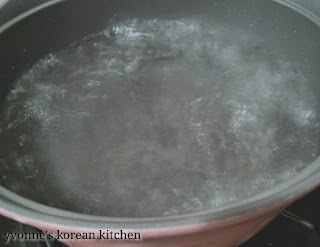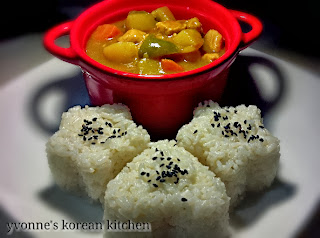Sigeumchi Namul (Spinach Side Dish)
Sigeumchi (spinach) has a high nutritional value and is extremely rich in antioxidants and iron. This is another common side dish you can see in Korean's meal. It's fast and easy to make and you can use this in japchae, bibimbap or kimbap. Or it's simple delicious just to eat with rice and stew.
Ingredients:
Spinach 1 bunch
Garlic (minced) 2 piece
Spring onion (chopped) 1 stalk
Soy sauce 1/2 tbsp
Sesame oil 1/2 tbsp
Salt 1/2 tsp
Sesame seed 1 tsp
Steps by steps photos:
1. Wash the spinach, and boil a pot of water (just enough to cover the spinach).
2. Once the water start boiling, put in the salt and spinach. Boil over high heat for 30 seconds to 1 minute (it depends on the type of spinach you are using. I am using baby spinach, 30 seconds will do).
3. When the spinach is cooked, drain the water and wash with cold water to stop the spinach from over cook.
4. Squeeze out excess water with hands and cut into 2 - 3 portion.
5. Prepare a bowl, put in soy sauce, garlic, spring onion and sesame oil.
6. Add in the spinach, toss and mix.
7. Place the spinach on a plate and sprinkle sesame seeds on top.
























































